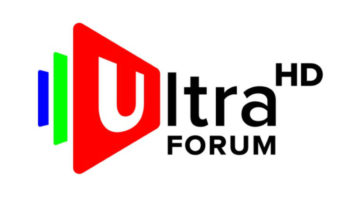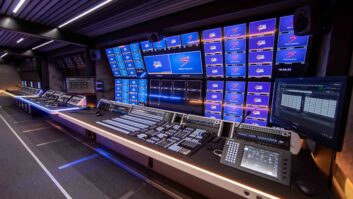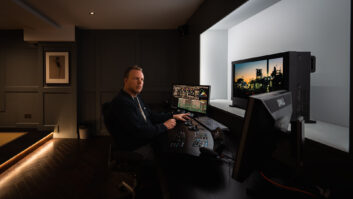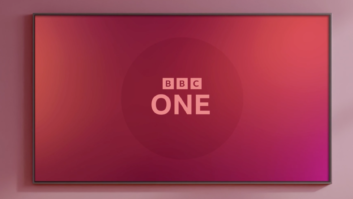Doubts persist about delivery, but leading drama producers not only believe that HD is a valuable production tool, but that rumours of its difficulties and pitfalls seem to have been greatly exaggerated. Richard Dean reports from the Royal Television Society’s recent ‘HD trials and tribulations’ session.
As pressure mounts for spectrum to be earmarked for a putative Freeview HD service, BBC TV’s Head of Drama Production Paul Richmond conceded that offering downloads to a personal video recorder storage device (PVR) may be the only terrestrial option if the cost of frequencies for real time delivery cannot be justified.
Speaking at the Royal Television Society’s ‘HD trials and tribulations’ gathering of top TV producers at its new central London talks venue in the MPC screening room on Wardour Street, Richmond explained that the BBC would have to satisfy a stringent value test before terrestrial HD could develop beyond today’s limited trials on the popular Freeview platform, and that available capacity was limited even if it was affordable.
Noting that BSkyB was currently the only mainstream broadcaster with a fully-fledged HD service in the UK, Richmond expected Sky HD to trigger “hundreds of thousands” of HD receiver sales and boost BSkyB’s market share from around 8m to 10m subscribers.
As delegates devoured stunning clips from Bleak House, Silent Witness and Robin Hood for the BBC and Terry Pratchett’s The Hogfather for Sky TV, the question of how such high quality images could be conveyed to viewers was never far away.
However the case for HD production, which was what this event was really about, was more clear cut. Equipment would soon be cost-neutral said Richmond, while producer Nigel Stafford-Clarke pointed out that although back-end post production was expensive, front-end costs were much cheaper.
“For Bleak House we wanted to be able to do a lot of fast handheld shots on two cameras and didn’t want footage to be an issue,” said Stafford-Clarke, citing future-proofing and overseas sales as other factors.
Admitting that HD was still in the dark ages when he first started using Sony 750 cameras in late 2004, Stafford-Clarke said there was no shortage of “anecdotal discouragement” at the beginning, reflecting a “slightly Luddite attitude” reminiscent of the early resistance to nonlinear editing.
“We were warned of too much detail, so that for instance the smallpox make-up in the drama would be difficult. But after extensive testing we found the system worked well with all kinds of make-up and lights, and didn’t produce the ‘buzz’ on fabrics we’d been warned about. Basically the doom-mongering was unfounded. HD is especially brilliant on eyes,” he added.
The point was well illustrated in a scene where Lady Dedlock (Gillian Anderson) is given a piece of devastating news, the significance of which she is unable to reveal to the messenger. “Viewers see a couple of hydrogen bombs go off in the actress’s eyes which would have been lost on standard definition,” said Stafford-Clarke.
Ian Sharples, line producer on Terry Pratchett’s The Hogfather, made the point that CGI is easier with HD than 35mm film as it produces a great key without pre-grading, and shooting is faster. With half the footage shot indoors at Three Mills Studio in East London, Sharples said he approached it like a film shoot with a full crew of director, DoP, clapper loader and focus puller. Director Vadim Jean, who used the Arriflex D20, ventured that HD can look like film although lighting was critical. It is also great for improvised comedy, as it catches everything compared to the Sod’s Law of film changes, he added.
Silent Witness producer George Ormond said he had looked at the Sony 750 and the Thomson Viper but also chose the Arriflex D20. “We were told that it was too much of a ‘movie camera’ for TV, and too expensive. But in reality it is ideal for TV drama, with no menus to navigate, a mechanical shutter, optical viewfinder, and a 35mm lens for a good narrow depth of field. The warning that HD would show everything in focus, including dust on the set, proved to be a myth.”
Although Ormond had to spend slightly more on prosthetics for the drama’s plentiful supply of dead bodies, the upside was that two-person shots could be blown up to create singles, a point ably demonstrated by a clip cutting between two people in conversation. “We shot no singles at all,” he revealed.
While conceding that using a large and heavy camera cabled up to VTR was a drawback, Ormond stressed that this had never stopped him taking a shot he wanted. “The Flashmag packs that allow recording on the camera are quite heavy at present, but this problem will probably disappear over time,” he added. Ironically it was the favoured 35mm lenses that lost about three set-ups a day because of longer line-up times, said Ormond.
That’s why Robin Hood producer Richard Burrell, who opted for a Panasonic Varicam, made a point of using no prime lenses. “Current back focus issues on prime lenses waste time,” he observed, adding that the Varicam offered less of a video look than the DigiBeta he had originally planned to use, different speeds, and plenty of latitude for grading.
The bigger problem was not the pictures but the 5.1 audio, said the receding Burrell, joking that if it wasn’t for 5.1 he would still have a full head of hair. At least we think he was joking. “And don’t get me started on Dolby E,” he added.






